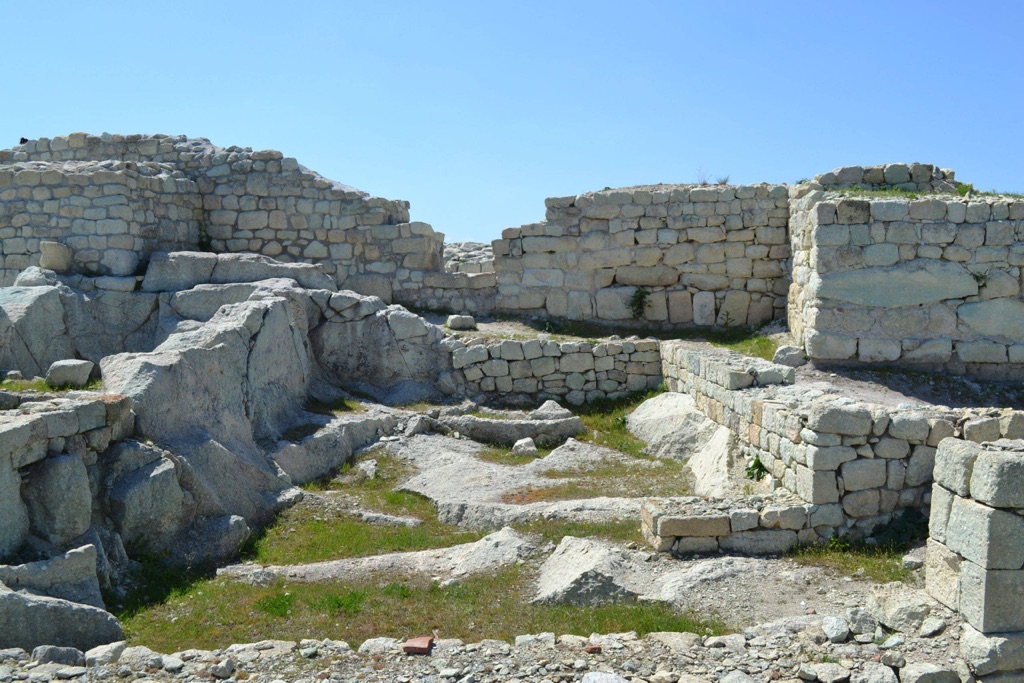Perperikon, an ancient Thracian city located in Bulgaria, stands as a testament to human civilization’s rich and complex history. Carved into a rocky hill in the Eastern Rhodopes, this archaeological site reveals a multi-layered past that spans thousands of years. Its strategic location has made it a significant religious, political, and economic center over the centuries. The remnants of Perperikon include a grand palace, a formidable fortress, and a sacred temple, which together narrate the story of a once-thriving society.
Get your dose of History via Email
Historical Background of Perperikon
Perperikon’s discovery unfolded gradually, with initial findings emerging in the 20th century. However, it was not until 2000 that archaeologist Nikolai Ovcharov brought it to the world’s attention. The site’s excavation has since unveiled a rich tapestry of history, revealing that the Thracians built it. Over time, it became a melting pot of cultures, with Romans, Byzantines, and Bulgarians leaving their mark. Perperikon has witnessed numerous historical events, including religious rituals and political decisions that shaped the region’s destiny.
The Thracians, known for their warrior culture and artistry, originally established Perperikon. They carved the city into the rocky terrain, creating a lasting monument to their civilization. The site’s significance grew with the Roman conquest, as they expanded and fortified it. Later, during the Byzantine era, Perperikon continued to flourish, adapting to the changing times. The Bulgarians also recognized its strategic importance, contributing to its fortifications and structures.
Throughout its history, Perperikon has been more than just a stronghold. It served as a religious sanctuary, with a temple dedicated to the Thracian god Dionysus. This temple was a pilgrimage site, attracting worshippers from far and wide. The city’s religious significance persisted through the Roman and Byzantine periods, with the adoption of Christianity leading to the construction of churches.
Perperikon’s strategic location made it a coveted prize for many empires. It was the scene of numerous battles and conquests, reflecting the turbulent history of the Balkans. The fortress’s walls bear the scars of these conflicts, standing as silent witnesses to the past. Despite these upheavals, Perperikon remained an important cultural and economic hub until its decline in the 14th century.
The site’s rediscovery and subsequent archaeological work have shed light on its past inhabitants and their way of life. Artifacts unearthed at Perperikon tell stories of trade, craftsmanship, and daily life. These findings have helped historians piece together the city’s history, providing a glimpse into the lives of those who walked its streets centuries ago.
About Perperikon
Perperikon’s architecture is a marvel of ancient engineering. The city was hewn directly from the rocky terrain, showcasing the Thracians’ mastery of stone carving. The complex includes a palace, a fortress, and a sacred temple, each reflecting the site’s multifaceted role in history. The buildings were constructed using local materials, which have withstood the test of time.
The palace of Perperikon, located at the hill’s summit, offers panoramic views of the surrounding landscape. Its walls and rooms, though now in ruins, hint at the grandeur that once was. The fortress, with its imposing walls and defensive structures, provided protection against invaders. It was continuously reinforced and expanded by successive inhabitants.
The temple of Dionysus is perhaps the most intriguing aspect of Perperikon. Carved into the rock, it served as a center for religious rituals and oracles. The site’s religious significance is evident in the numerous altars and sanctuaries scattered throughout the complex. These spaces were used for offerings and ceremonies, linking the city to the divine.
Architectural highlights of Perperikon include the intricate water supply system, which ensured the city’s survival during sieges. The system channeled water from nearby springs, demonstrating the inhabitants’ ingenuity. The city’s layout, with its streets and buildings, reflects a well-planned urban design that catered to both its residents’ needs and its ceremonial functions.
Over the centuries, Perperikon underwent numerous reconstructions and modifications. Each culture that inhabited the site added its architectural styles and building techniques. This blend of influences has resulted in a unique historical landscape, offering insights into the region’s diverse cultural heritage.
Theories and Interpretations
Perperikon has been the subject of various theories and interpretations, owing to its complex history and the mysteries that shroud it. Some scholars believe it was a major religious center, while others suggest it played a pivotal role in political affairs. The site’s connection to the Thracian god Dionysus is well-documented, but the full extent of its religious significance remains a topic of debate.
Theories about Perperikon’s use have evolved with ongoing excavations. The discovery of the temple and evidence of ritual practices support the idea that it was a significant spiritual hub. The site’s location, high above the valley, adds to its mystical allure, leading some to speculate about its role in ancient astrology and prophecy.
Interpreting Perperikon’s history has required matching archaeological findings with historical records. This task has been challenging due to the scarcity of written sources from the Thracian period. However, the artifacts and structures unearthed have provided valuable clues, allowing historians to reconstruct the site’s past.
Dating Perperikon has involved various methods, including stratigraphy and radiocarbon dating. These techniques have helped establish a timeline for the site’s occupation and development. The results suggest that Perperikon’s history spans several millennia, with evidence of human activity dating back to the Bronze Age.
The mysteries of Perperikon continue to captivate scholars and visitors alike. Each new discovery adds a piece to the puzzle, gradually revealing the secrets of this ancient city. As research progresses, the interpretations of Perperikon’s purpose and significance will undoubtedly evolve, offering fresh perspectives on this enigmatic site.
At a glance
Country: Bulgaria
Civilization: Thracian
Age: Over 7000 years, with evidence of activity from the Bronze Age
Conclusion and Sources
Reputable sources used in the creation of this article include:
- Wikipedia: https://en.wikipedia.org/wiki/Perperikon

